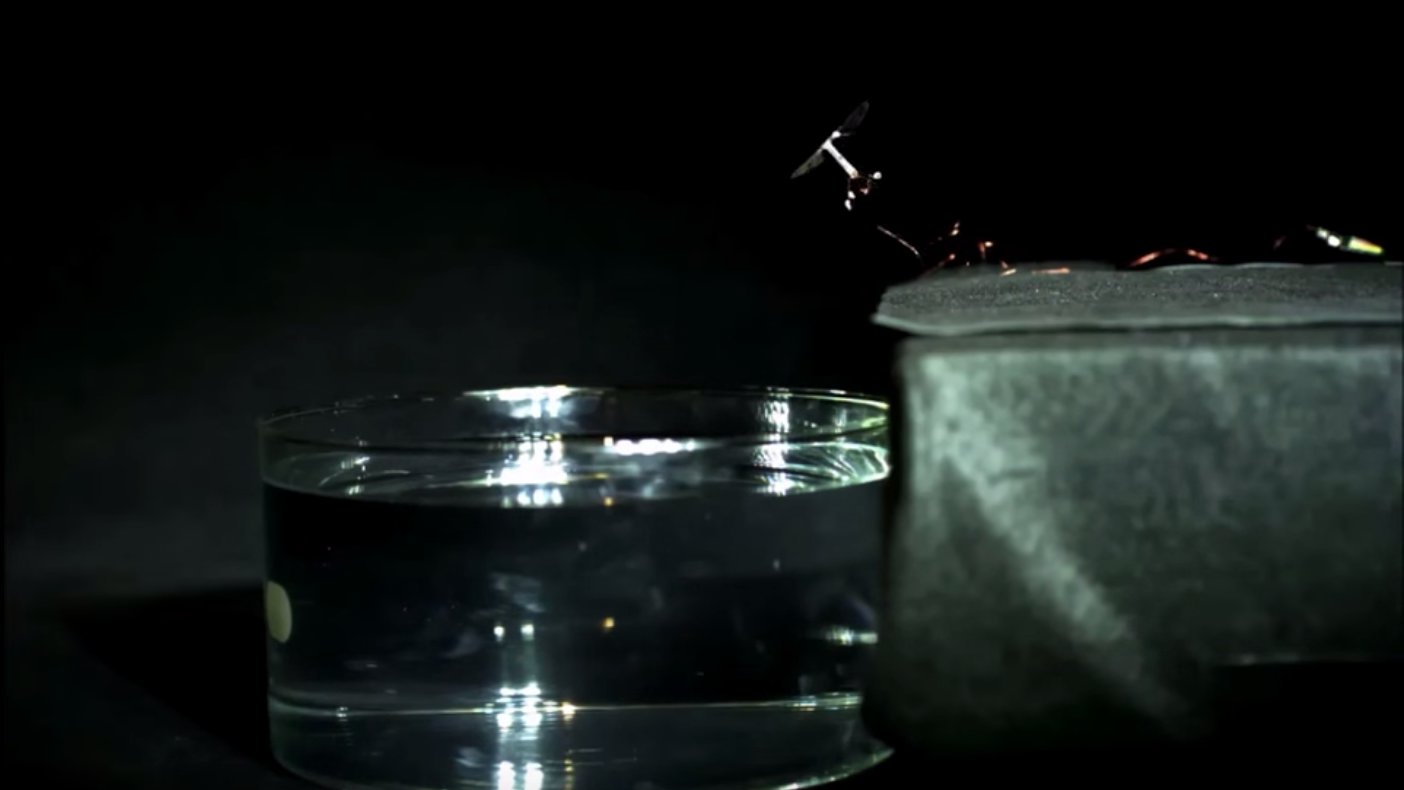Harvard is teaching its robot bee how to swim
Splish, splash

For a few years now, Harvard engineers have been working on a tiny robotic bee. They've shrunk it down smaller than a paperclip, to a weight of about 0.1 grams, though it does still need to be tethered for power and control.
But the latest breakthrough is that it now doubles as a submarine. Crash-landing into water is no longer the end of its life - it can swim to freedom. It turns out that swimming is a lot like flying - you just need to flap your wings slower.
How much slower?
About nine times a second, as opposed to 120 times a second in the air. Otherwise, it's fundamentally the same motion, and the robot's torque control allows it to be steered.
You can see it in action in the video above. It flies off the first platform, splashes into water, sinks to the bottom, and then makes its way to the surface again with its wings. The splashdown is necessary, because the robo-bee is light enough to just sit on the surface tension of the water otherwise.
Getting back into the air again, however, is a hurdle that the researchers haven't yet cleared. That's what they're working on next. In the meantime, you can check out the details of the robo-bee's aquatic locomotion in a paper presented at the IROS 2015 convention this week in Hamburg, Germany.
Get the best Black Friday deals direct to your inbox, plus news, reviews, and more.
Sign up to be the first to know about unmissable Black Friday deals on top tech, plus get all your favorite TechRadar content.
